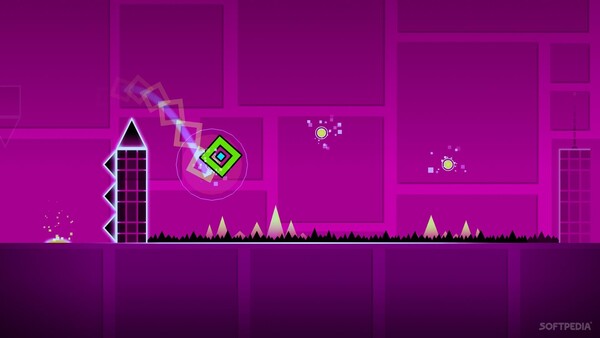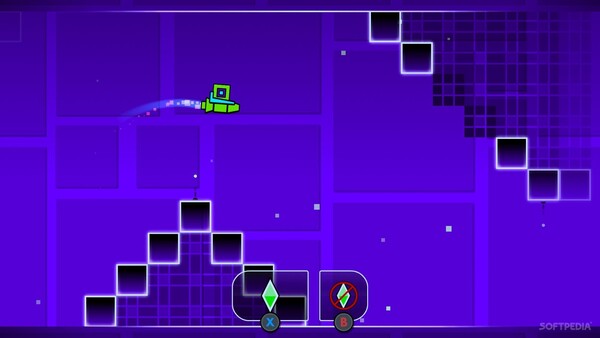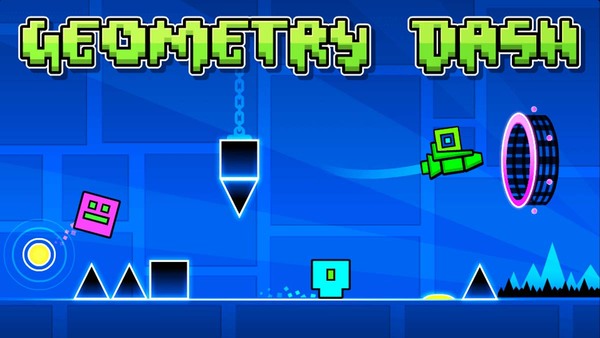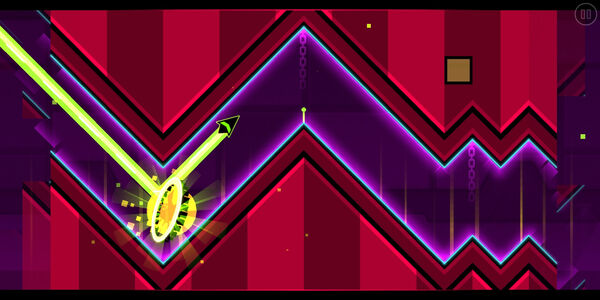Popular Now
Geometry Dash, the lightning-fast, rhythm-based platformer from RobTop Games, thrives on split-second precision. One pixel off, one beat late, and your attempt is over. But beneath its neon chaos lies a silent, invisible adversary: input latency—the delay between a player's action and the game’s reaction. This delay affects player accuracy, rhythm, and even the fairness of leaderboard rankings. In this article, we take a deep, chronological dive into the root causes, manifestations, and potential fixes of input latency in Geometry Dash, spanning devices, operating systems, and engine mechanics.
1. The Early Days: Tap vs Response (2013–2014)
When Geometry Dash first hit iOS and Android, many users noticed a slight delay between their tap and the cube’s jump. This wasn’t imagined. The game, built on Cocos2d-x, used polling-based input detection. That meant inputs were read at regular intervals, introducing a delay of up to 16 milliseconds even in ideal conditions.

At the time, mobile processors weren’t optimized for real-time input in rhythm games. With system UI layers and animation rendering, input responsiveness often suffered. Worse, tap locations and touchscreen quality varied across devices, introducing device-specific inconsistencies.
2. Mobile OS Variance: Touch Drivers and UI Layers (2015–2016)
With Geometry Dash’s increasing complexity in user-generated content, players noticed large performance differences between devices. The Android ecosystem in particular showed major disparities. Manufacturers applied custom skins like TouchWiz or MIUI, which affected touch drivers and added UI layers that interfered with timely input processing.
Some phones delayed touch events to smooth user experience in UI animations. But for Geometry Dash, where precision matters, that smoothing translated to missed jumps and failed sequences. Input latency on some phones ranged between 40 to 100 milliseconds under load, frustrating competitive players.
3. PC Port Input Handling (2016–2017)
The PC version of Geometry Dash was expected to eliminate latency issues, thanks to direct keyboard input. However, many players found it just as unresponsive on certain systems. The root problem was again polling-based input tied to the game’s frame cycle—locked at 60 frames per second.

Depending on keyboard type and driver stack (DirectInput or XInput), additional delay crept in. Gaming keyboards using XInput showed minimal lag, but general-use or laptop keyboards could introduce buffering that slowed input response by 5 to 10 milliseconds. Layer this with Windows’ system input stack and frame rendering, and latency could still undermine precise rhythm sections.
4. Input Devices: Touch vs Keyboard vs Controller
Not all inputs are created equal. Geometry Dash can be played with touchscreens, keyboards, or controllers—and each introduces unique latency characteristics. Touchscreens vary dramatically by panel type and OS optimization. Keyboards generally perform better, but not all keyboards are equal. Controller players often report analog dead zones and stick response lags.
Advanced players even experimented with resistive screen overlays, grounded styluses, and rapid-fire keys. But such hacks provided only incremental benefits and were inaccessible to average users. Ultimately, the playing field remained uneven due to hardware differences.
5. Input Lag’s Impact on Leaderboards and Records
As the Geometry Dash community became more competitive, input latency began influencing high-level achievements. Players with faster devices or lower-lag setups had an edge on demon-level clears and leaderboard times.
Debates erupted about leaderboard fairness. Some proposed tagging records with device specs or allowing only certain hardware for validation. But no official standard emerged. The community began manually reviewing high scores, looking for signs of input irregularities or desynced attempts.
6. The Input Buffer Toolchain: Physics vs Frame Timing
Geometry Dash runs on a fixed 60Hz physics loop, where input is read once per cycle. If a player taps between cycles, the game queues the input until the next frame. That means an inherent delay of up to 16 milliseconds.
This queuing system works well when frame timing is consistent. But in heavy levels or on older devices, dropped frames can cause the physics loop to batch updates, worsening latency. Inputs get stuck in queues longer than expected, leading to missed actions that feel like "random" failures to the player.
7. Practice Mode vs Normal Mode: Latency Differences
Many players report feeling that Practice Mode plays “better” than Normal Mode. It turns out, there’s some truth to this. In Practice Mode, certain UI elements and particle effects are disabled, reducing CPU load. Music loading is also streamlined.
With less on-screen activity, input responsiveness improves slightly. This leads to the frustrating scenario where a player nails a section in Practice Mode repeatedly, only to fail in Normal Mode—not because of timing errors, but because of subtle latency shifts caused by added system load.
8. Platform-Specific Delays: Android, iOS, Windows, macOS
Every operating system adds its own layer of input latency. Android, for example, uses touch filtering that can introduce 10–30 milliseconds of delay. iOS delays low-priority inputs when background processes are active. Windows uses different input stacks (e.g., WinTab vs Raw Input), and macOS introduces lag via system-wide effects like transparency or accessibility overlays.
Players discovered these issues by benchmarking with tools like LatencyMon or touch delay testers. Disabling visual effects, switching OS input modes, or using specific hardware configurations all helped—but again, only for users with the time and knowledge to make those adjustments.
9. The Hidden Burden of Audio-Video Sync
One of Geometry Dash’s hallmarks is its tight integration of music and gameplay. But that very strength can become a weakness when audio buffering causes desync. Mobile devices, in particular, use audio mixers that pre-buffer sound to reduce choppiness. That buffer can delay audio by 50 to 100 milliseconds.
Players rely on audio cues for timing jumps. When audio is delayed, it causes mismatched expectations. You hear the cue too late, or your input lands before the game triggers the beat. On high-end PCs with ASIO drivers, the delay is negligible. On phones, it can mean the difference between success and failure.
10. Toward Solution Space: What Can Be Done?
To combat input latency, RobTop and the community could work together on multiple solutions. Engine-side, switching from polling to event-driven input would eliminate some frame delay. Offering a "Low Latency Mode" that disables particle effects, music buffers, and overlays would help players on low-end devices.
Community members could contribute by measuring device latency, sharing optimized settings, and building diagnostic overlays that display frame and input timing in real time. If verified players can transparently track and report their performance metrics, it could level the competitive playing field and reduce complaints of unfairness.
Conclusion
Input latency in Geometry Dash is a quiet but powerful force. It creeps in through hardware limitations, software design, OS buffering, and even the audio pipeline. Though invisible to the naked eye, it dictates player experience at every level—from casual runs to world-record leaderboards. Addressing it demands both technical enhancements by RobTop and grassroots advocacy from the community. Only by reducing latency can Geometry Dash deliver on its rhythmic promise: where every beat and every tap truly sync in harmony.













